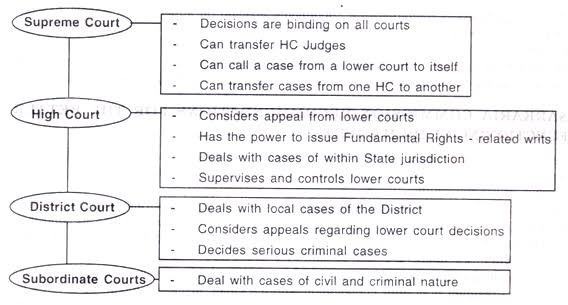The question of whether the law declared by one High Court is binding on the subordinate courts of another High Court is a complex issue that lies at the intersection of judicial hierarchy, legal precedent, and principles of stare decisis. This article provides a comprehensive analysis of the binding effect of High Court judgments on subordinate courts, examining relevant legal principles, case law precedents, and statutory provisions.
Through an exploration of the doctrine of precedent, principles of comity, and judicial interpretation, this article aims to elucidate the nuances of this legal doctrine and its implications for the administration of justice in India.
Introduction:
The Indian judicial system is structured hierarchically, with High Courts exercising appellate and supervisory jurisdiction over subordinate courts within their respective territories. However, questions often arise regarding the extent to which the decisions of one High Court are binding on the subordinate courts of another High Court. This article seeks to address this issue by analyzing the legal principles governing the binding effect of High Court judgments on subordinate courts. By examining relevant statutes, case law precedents, and judicial interpretations, this article aims to provide clarity on this often misunderstood aspect of the Indian legal system.

Hierarchy of Courts in India:
- Supreme Court of India:
- Apex court with jurisdiction over all courts in India.
- Final interpreter of the Constitution and highest appellate authority.
- High Courts:
- Each state in India has its own High Court.
- Exercise original, appellate, and supervisory jurisdiction over subordinate courts within their territorial jurisdiction.
- Subordinate Courts:
- Includes District Courts, Sessions Courts, and other lower courts.
- Adjudicate on matters within their territorial jurisdiction, subject to appellate and supervisory jurisdiction of High Courts.

Doctrine of Precedent and Stare Decisis:
- Doctrine of Precedent:
- Underlies the principle of stare decisis, which means “to stand by decided matters.”
- Ensures consistency, predictability, and uniformity in the application of law.
- Binding Precedents:
- Decisions of a higher court are binding on lower courts within the same hierarchy.
- Decisions of the Supreme Court are binding on all courts in India, while decisions of a High Court are binding only within its territorial jurisdiction.
- Persuasive Precedents:
- Decisions of foreign courts, decisions of other High Courts, and obiter dicta may have persuasive value but are not binding on Indian courts.
Binding Effect of High Court Judgments:
- Intra-Territorial Binding:
- High Court judgments are binding on all subordinate courts within its territorial jurisdiction.
- Subordinate courts must follow the decisions of the High Court in its state.
- Inter-Territorial Binding:
- The law declared by one High Court is not binding on the subordinate courts of another High Court.
- However, judgments of other High Courts may have persuasive value and can be considered by the courts in exercising judicial discretion.
Case Law Analysis:
- Jai Singh v. West Bengal (2010):
- The Supreme Court clarified that the law declared by one High Court is not binding on the subordinate courts of another High Court.
- Emphasized the importance of judicial comity and respect for the independence of High Courts.
- Lalit Kumar v. State of Rajasthan (2015):
- Rajasthan High Court reiterated that judgments of other High Courts are persuasive but not binding on subordinate courts.
- Held that subordinate courts should follow the decisions of the High Court within its own territorial jurisdiction.
Statutory Provisions:
- Code of Civil Procedure, 1908:
- Section 21: Provides for the jurisdiction of courts in India.
- Section 24: Confers power on the High Court to transfer cases from one subordinate court to another.
- Code of Criminal Procedure, 1973:
- Section 406: Grants the High Court the power to transfer cases from one subordinate court to another.
- Section 482: Empowers the High Court to exercise inherent powers to prevent abuse of process of any court.
Conclusion:
The question of whether the law declared by one High Court is binding on the subordinate courts of another High Court is a complex issue that hinges on principles of judicial hierarchy, precedent, and judicial discretion. While High Court judgments are binding within their territorial jurisdiction, they do not have a binding effect on subordinate courts in other states. However, the judgments of other High Courts may have persuasive value and can be considered in exercising judicial discretion. The Indian legal system needs to uphold principles of judicial independence, comity, and respect for precedent while ensuring consistency and fairness in the administration of justice.
Adv. Khanak Sharma

